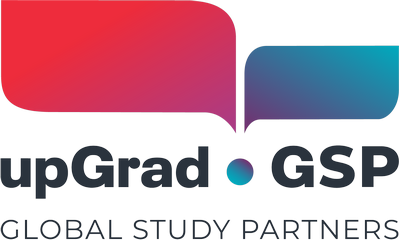North America welcomes a large number of international students every year. Aside from its abundance of prime educational institutions, the region promises great prospects for those who want to pursue a career within its wide network of local companies and industries. Two of the best ways to grab these opportunities are through Curricular Practical Training (CPT) and Optional Practical Training (OPT). In this quick guide, we’ll talk about these two study-and-work routes and the differences between CPT vs. OPT.
What is CPT?
CPT is a temporary employment program available for international students who hold an F1 visa and wish to gain practical employment experience directly related to their major. This generally applies to internship, practicum and co-op opportunities from a sponsored employer partnered with the student’s college or university as part of an established curriculum.
CPT lets students work full-time (over 20 hours a week) or part-time (up to 20 hours per week). Work under CPT must be completed before graduating.
If applying for CPT, the student must secure the training opportunity before authorisation. However, they may only begin work with the permit. One can also have two or more CPT authorisations simultaneously.
Some universities require training opportunities that necessitate CPT. For example, a tech major might need to get internship credits, so they apply for a job at a software development firm partnered with the university. They get the position and apply for CPT authorisation through their university. Then, they work for the company for the specified hours to complete their course requirement.
Students who are working under CPT must be cautious not to go over 365 days of full-time work, which may happen if they take on more than one job opportunity at a time. Doing so might make them ineligible to apply for work after graduation.
What is OPT?
OPT is another temporary employment program that allows international students to take a paid job that’s directly related to their major or study from any employer. Through OPT, those with F1 visas can work up to 12 months in the country. OPT is available after a student completes their first academic year. It can be completed before (pre-completion OPT) or after (post-completion OPT) their studies. If a student chooses to start working while earning their degree, they may deduct their pre-completion OPT period from the available post-completion OPT period.
Students can apply for OPT at each education level (e.g. undergraduate and postgraduate), so they can get additional authorisation when they change to a higher one (though periods of OPT may not overlap).
OPT is one of the primary ways for international students to remain in the US and enter the local job market. Unlike CPT, OPT is primarily granted as a separate work opportunity (i.e., it doesn’t have to be part of a school’s program) for students who want to earn while they study or after graduation. For instance, a marketing major may apply for OPT after finishing their studies when they’re offered a job at an advertising company. This would mark the start of their career in the field. If they would like to continue working, they may change their visa status within that period; they could transition from an F1 visa to an H1B temporary working visa, which will allow them to remain in the country for up to six years under petition by their employer.
What is OPT extension?
Students with a STEM (Science, Technology, Engineering and Maths) degree are allowed to apply for an OPT extension. This enables them to extend their employment for up to 24 months, totaling three years of work authorisation.
An OPT extension is applicable for students:
- currently working in a post-completion OPT period
- are employed by (or wish to work with) a company that uses the E-Verify program
- have a signed Form I-983 “Training Plan for STEM OPT Students.”
What are the differences between CPT and OPT?
There are several differences between CPT vs. OPT. Let’s explore each one.
Purpose
Both CPT and OPT are designed to help students gain practical experience in their field of study. That said, CPT is undertaken simultaneously as a program. It’s usually part of a curriculum—and therefore a requirement to complete a course. OPT, on the other hand, is an optional post-study work opportunity that’s not required for graduation.
Period and duration of work
CPT is only applicable when a student is enrolled. An individual can either do it part-time (20 hours during school) or full-time (40 hours in the summer). OPT is done full-time after graduation. Both CPT and OPT allow students to work for up to 12 months. However, the latter can be extended for an extra 24 months if an eligible candidate has a STEM degree.
Employer and type of work
A student on CPT is permitted to work with any employer, though typically these are companies partnered with their university. Graduates on OPT can only work with employers who are on the I-20 list and the Student and Exchange Visitor Information System (SEVIS).
CPT and OPT options with upGrad GSP
upGrad GSP maintains a network of educational partners in the US and Canada that can assist students who would like to understand CPT vs. OPT and explore their related opportunities. Speak to one of our business development experts to learn more!




